#ingwe
Text
Here's another Nature of Middle-Earth quote that I keep thinking about:
"[Years of the Trees:] 2223. The "Ambassadors" return. Great Debate of the Quendi. A few refuse even to attend. Imin, Tata, and Enel are ill-pleased, and regard the affair as a revolt on the part of the youngest Quendi, to escape their authority. None of the First Elves (144) accept the invitation. Hence the Avari called and still call themselves "the Seniors"." (NoME 96)
I think that's super interesting! Tolkien gives multiple potential versions of this whole sequence, when the Three Ambassadors return to Cuiviénen, so this is only one of them, but it's kind of my favorite. I like the idea that the Three Ambassadors sort of usurped the leadership of the Three Fathers, and that Imin, Tata, and Enel are potentially still out there, and may have a grudge against those three descendants of theirs.
Imin especially is a pretentious asshole, as he claims to be the "Father of all Quendi", and seems to want control over all the Elves. I want to write a fic where Morgoth or Sauron ally with Imin, maybe they tell him they can help him regain his authority over the Elves? It would certainly be an interesting premise if the Three Fathers showed up at Valinor or Beleriand one day, with the intent of taking back their kingship.
It's also always been bizarre to me that Fëanor was so worried about Fingolfin usurping the throne when Finwë was king in a place where kings do not die, and do not really need heirs (theoretically). But if Finwë was a usurper before Fingolfin was, then Fëanor's fears have a bit more ground, I think, especially if Fingolfin had the greater love from their people. It's happened before, Fëanor would think, therefore it could happen again. Elves seem to follow who they prefer as a king rather than who technically has the most claim, which is shown both in the Three Ambassadors vs the Three Fathers, and also with Fëanor vs Fingolfin during the Flight.
#tolkien#the silmarillion#ingwe#finwe#elwe#imin#tata#enel#feanor#fingolfin#nature of middle earth#cuivienen#the avari
246 notes
·
View notes
Text

To put it simply:
Finwë was a rebel (we need to talk about this and it's implications more)
Finwë found Valinor less exciting for himself than he did for Míriel and how much she would love it and benefit from it and improve because of it (AWWWW my HEART)
Ingwë was just obsessed with Varda (he loves shiny goddesses ✨✨)
Elwë wanted to be there for his best friend (or something more ;) hehehehe maybe-one-sided Finwë x Elwë is something we've all thought about don't lie)
#finwe#ingwe#elwe#thingol#míriel þerindë#the silmarillion#silm#nature of middle earth#legendarium tag#There's a bit too much maths in NoME but apart from that and the last chapter it's VERY interesting#first NoME read#and it was not void
374 notes
·
View notes
Text
Hc that Miriel was lowkey the boss when she was still alive.
Like, whenever the kings of the vanyar, noldor, and teleri would meet up to discuss things, what she said goes.
Just:
Olwe: *proposes smth lowkey stupid as a joke*
Miriel: *raises eyebrow*
Olwe: mighty sorry there, ma’m 😰
——————————————-
Finwe: -that sounds like an interesting proposal-
Miriel: which we will not be doing
Finwe: which we will not be doing
Olwe: *cough* whipped
Finwe: olwe, she gave you a look and you grounded yourself
———————————————
Ingwe: *proposes smth sensible*
Miriel: *nod of approval*
Finwe: *grumbling* teachers pet
Ingwe: nepotism, bitch
#ingwe is Miriel’s nephew#that’s it that’s the joke#and nepotism actually comes from the italian word for nephe#so i though it’s fit#miriel#finwe#ingwe#olwe#lord of the rings#lotr#lotr elves#silmarillion#the hobbit#incorrect tolkien quotes#silm incorrect quotes#incorrect lotr quotes#incorrect hobbit quotes#miriel is feral#give miriel a personality 2023#miriel therinde
60 notes
·
View notes
Text
Finwë: I need an alibi.
Olwë: Fine.
Ingwë: I need one too.
Olwë: Okay, what did you guys do?
Finwë: Plausible deniability?
#lotr#lord of the rings#silmarillion#incorrect lord of the rings quotes#incorrect silmarillion quotes#incorrect quotes#finwe#lotr finwe#ingwe#lott ingwe#olwe#lotr olwe
53 notes
·
View notes
Text
Obsessed with the idea of other characters being obsessed with Manwë (Varda, Ulmo, Melkor, Ingwë, Fëanor etc etc).
He's just so pure and pretty and precious that they can't help it, regardless of whether they love him or hate him. And when he sees the desire in their eyes, he thinks it's love and loves them back because he's too sweet and innocent for his own good.
#manwe week#manweweek#manwe#manwë#varda#ulmo#melkor#morgoth#ingwe#feanor#shipping headcanons#silmarillion
32 notes
·
View notes
Text
House of Finwe

Missing some ppl and with the addition of others
#gil's art#silmarillion#silm art#finwe#ingwe#nolofinwe#anarie#ingwion#indis#irime#findis#rumil#olwe#earwen#arafinwe#house of finwe#designs subject to change
30 notes
·
View notes
Photo

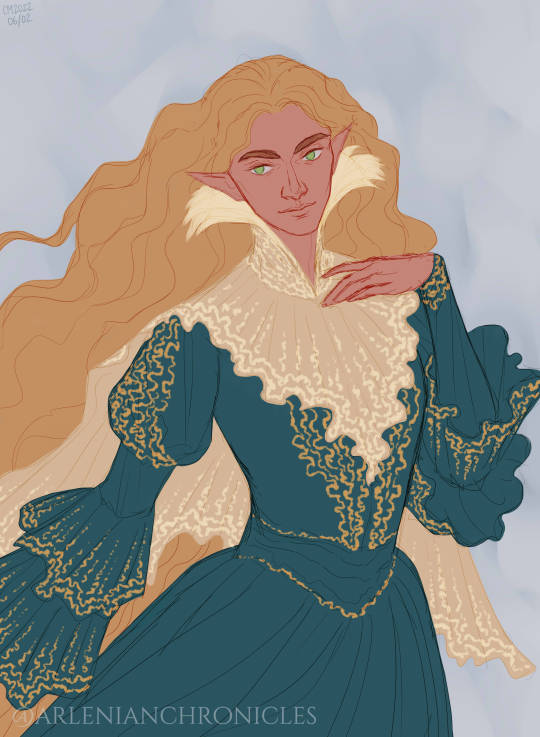
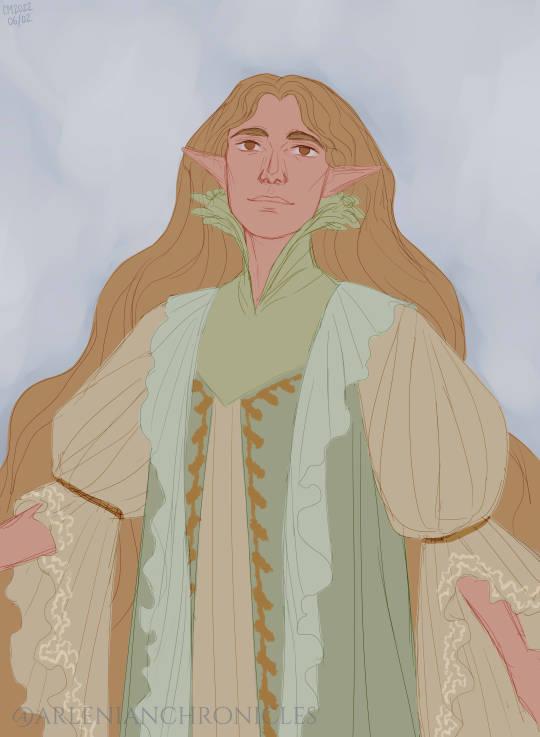

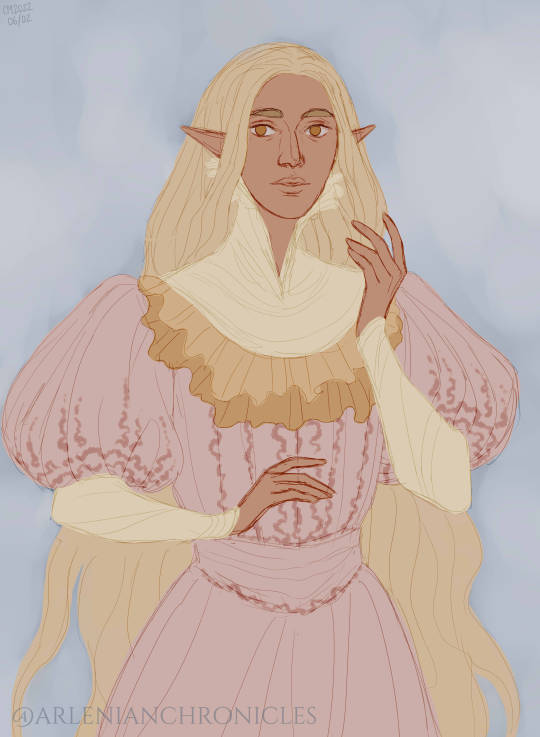
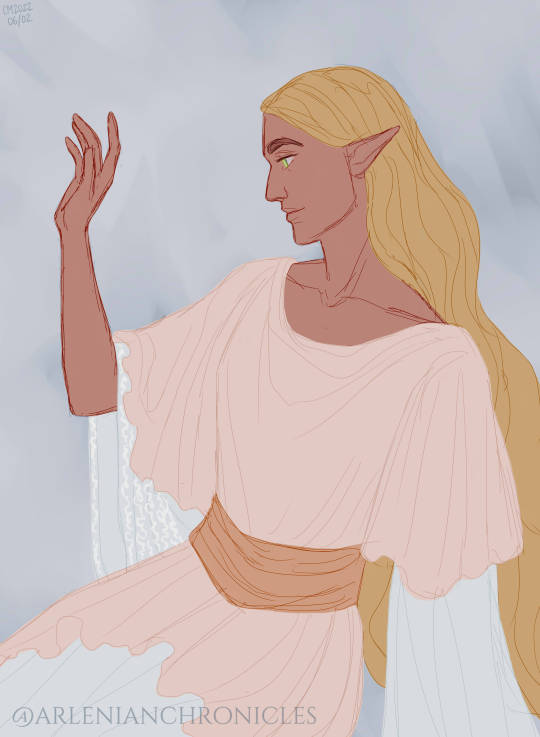
Vanyarin Portraits: Ingwë, Indis, Elemmírë, Elenwë, Amarië, and Idril.
Alrighty, it’s time for the Vanyar! Their designs are inspired by old tea gowns, with the frills and poofy, flowing sleeves and occasional frilly collar. The colours can range from pastel to dark, but I went with more pastel-y here XDD
As far as I know, Elemmírë’s gender is unknown, so I’ve decided to go with the headcanon that they’re bigender, both male and female! Also, I know Idril isn’t a full Vanya, but I wanted to keep the portraits at an even number, so I added her in to keep Elenwë company loll Her dress is a mix of frilly Vanyarin and streamlined Noldorin fashion, and I imagine she’s the type to stay moderate on the fancy embroidery XDD
#i also redid ingwe's colour palette a bit#cuz i wasn't happy with the original#tea gown palettes can be tough sometimes loll ^^;;#art#my art#tolkien#silmarillion#fanart#elves#eldar#vanyar#ingwe#indis#elemmire#elenwe#amarie#idril#idril celebrindal#portraits#character design#character concept#alrighty so we got the sindar teleri and now the vanyar down#i guess the noldor are next?#siiiigh#the dreaded house of feanor loll#we'll see we'll see
583 notes
·
View notes
Text
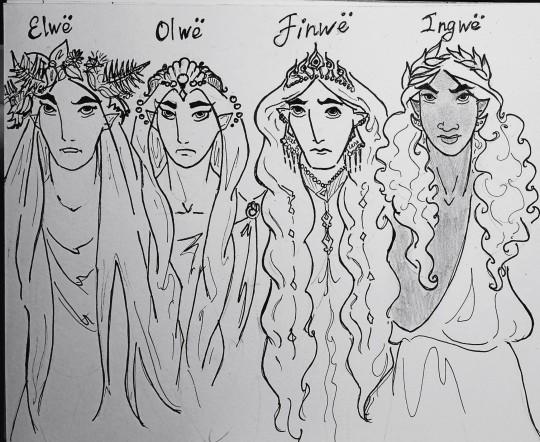
Day 12. Lords
Now i can finally start posting as i draw. So originally i wanted to fit waaay more of them, cause these four are kinda basic. Wanted to draw Elmo, Morwë&Nurwë, Lenwë, Nówë aka Círdan... But quicky realized i had neither space for them nor patience to design these many. Maybe one day i will draw the Debate or smth.
45 notes
·
View notes
Text
16 notes
·
View notes
Text
Hail Freyr
Hail to the beloved of Gerda
Hail to the Grain-Lord
Hail to the King of the Forest
Bless and walk with us this day
16 notes
·
View notes
Text
One headcanon of mine is that Elenwe is a daughter of Ingwe and was named after Elwe.
Ingwe names her this partially out of love for his friend but also in a moment of foresight that, at the time, he could not decipher.
In the end Elenwe, just like her namesake, is lost on the journey.
23 notes
·
View notes
Text
Currenly thinking about The Great Journey and the Flight of the Ñoldor.
About how Ingwë and Fëanor were both so eager to depart and lead their smaller hosts. About how Ñolofinwë is said to be "his father's son", and led the second, larger host, of whom only a few stayed behind. About how Elwë and Finarfin both followed their friend/brother and their people, but then didn't make it all the way because something happened that made them want to stay behind.
Idk if parallels were intended with the three ambassadors and the sons of Finwë, probably not, but hey I See Some Anyways and it's fun to think about.
#tolkien#ingwe#finwe#elwe#fingolfin#finarfin#feanor#the silmarillion#the great journey#the flight of the noldor#i have so much tolkien elf brainrot right now it's disgusting
58 notes
·
View notes
Text
When the elves first met Orome:
Orome: *explaining everything to the elves, including eru and the valar*
The elves: so what i’m hearing is: we finally have someone to blame when things go wrong.
Orome:
Orome: i guess technically-
#lord of the rings#lotr#silmarillion#the hobbit#lotr elves#incorrect tolkien quotes#silm incorrect quotes#incorrect lotr quotes#pre orome days#orome#finwe#ingwe#elwe#olwe
108 notes
·
View notes
Text
afaik the sister/niece/daughter options are somewhere in HoME
15 notes
·
View notes
Text
I Read The Silmarillion So You Don't Have To, Part Two
I'm going to pick up right where I left off, so please go and read part one if you haven't already: https://www.tumblr.com/nyxshadowhawk/726120109073104896/i-read-the-silmarillion-so-you-dont-have-to-part?source=share
QUENTA SILMARILLION
Okay, we’ve finally gotten to the main part of the narrative! Brace yourself.
Chapter 1: Of the Beginning of Days
In which the Valar plant some trees.
We get a quick recap of Tulkas having ousted Melkor from Arda, and then the Valar create two lamps to brighten everything up. They put one in the North, called Illuin, and one in the South, called Ormal. Yavanna planted seeds that caused all plants to grow. The Valar decided to rest at the very middle of the world, at the precise point where the two lights blended, on an island called Almaren in the middle of a lake. Everything’s great for about two minutes until Melkor sees all the beautiful things that the Valar have created, gets jealous again, and sneaks back into Middle-earth while the Valar have a party.
Melkor builds a fortress of his own deep underground, called Utumno. If you think Mordor is bad, it’s a vacation home compared to Utumno. Melkor simply being there is like dropping poison into the water; all the plants slowly die, and the animals turn into monsters. Catching the Valar off-guard, Melkor destroys their lamps, which sends them crashing down and literally takes out chunks of the land. The Valar’s original design for Middle-earth is permanently ruined after that. Then Melkor runs away to his fortress and hides.
At this point, the Valar are completely exhausted, because this fucking guy just won’t leave them alone. They don’t know where he’s hiding, so they can’t really do anything but pick up the pieces and move themselves to Aman, the land in the far west, on the shores of the sea that encircles the world. Instead of living in paradise in the middle of Middle-earth, they have to live in a distant fortress on a distant mountain, and behind the mountains they create the land of Valinor. (“Midgard” almost literally means “middle-earth,” so Valinor is roughly equivalent to Asgard.)
They salvaged as many beautiful things from Middle-earth as possible, and put them in Valinor, making it the most beautiful land ever. They built a city called Valmar, and on a mound to the west of the city, Yavanna sat and sang a song of creation. On the mound grew two beautiful trees, the Two Trees of Valinor. The male tree, Telperion, was silver, and the female tree, Laurelin, was gold. Both of them glowed with the beautiful light of what had been the lamps. (If you see glowing trees in anything, chances are they’re based on this. The Erdtree in Elden Ring is almost certainly inspired by this.) The trees bloom and wilt over the course of a single day, alternating with each other. The trees are beautiful, all the Valar are happy, and everything is fine for a bit.

Telperion and Laurelin by Jordan Patchak
We get a little more detail about what the Valar do — Aulë invented all handicrafts, Yavanna invented agriculture, Manwë sits upon his mountain and keeps watch over the world with the help of spirits shaped like hawks and eagles, and invented poetry. Ulmo doesn’t come to Valinor, but just sort of does his thing in the ocean. Yavanna sometimes leaves Valinor to work at healing Middle-earth from Melkor’s evil influence, because she loves all the plants and still mourns their destruction. Oromë also comes to Middle-earth to hunt the monsters that Melkor left behind.
All of this is in preparation for the coming of Elves and Men, the Children of Ilúvatar. The Elves are most similar to the Ainur (because c’mon, they’re elves), but Men have “strange gifts” that the Elves don’t have. These strange gifts seem to be the ability to shape their own destinies, as opposed to everything about their lives being predetermined by the Music of the Ainur. Of course, the disadvantage there is that Men are even more susceptible to Melkor. And, just like with Melkor himself, anything Men do in the service of evil is going to end up working in Ilúvatar’s favor anyway. (The best example of this is Gollum attacking Frodo at the Crack of Doom, which is what ultimately allowed the Ring to be destroyed.) From the Elves’ perspective, Men are basically a bunch of mini-Melkors running around.
Having free will is also why Men are short-lived in comparison to Elves. Elves are immortal, but that means they’re stuck on Arda forever. If Elves are killed in battle, they go to the Halls of Mandos and stay there for a bit until they eventually reincarnate. Men, on the other hand, leave Arda after death and don’t come back. That’s actually an advantage, presumably because the spirits of Men will share in the creation of the next universe, and those of Elves will not, though we don’t actually know.
Chapter 2: Of Aulë and Yavanna
In which Aulë jumps the gun and creates Dwarves, and Yavanna decides that someone needs to speak for the trees.
So, if Elves and Men were created by Ilúvatar, you’re probably wondering, what about the Dwarves? Well, the Dwarves were created by Aulë, the god of mountains, metal, and rocks! No surprises there, right? Frankly, Aulë just got too impatient waiting for the Elves and Men to show up, so he created Dwarves in order to have someone to share his knowledge with. Of course, we all know how kindly Ilúvatar takes to people coming up with their own ideas and interfering with his vision, so he immediately confronts Aulë about the Dwarves. Aulë pacifies Ilúvatar by saying that his intention isn’t to have creatures to rule over, like Melkor, but to have creatures to teach and to love and to share knowledge with. He compares his creation of the Dwarves to a child innocently using toys to imitate their parent’s profession. Ilúvatar forgives Aulë because of his humility, and allows the Dwarves to live, on one condition: The Dwarves are not allowed to be the first people to walk upon Middle-earth, because Elves and Men are cooler, and Ilúvatar isn’t going to let Aulë screw that one up. They have to sleep underground until the time comes, and Aulë is punished for his impatience by having to wait longer for his own creations to live in Middle-earth. Another part of Aulë’s punishment is that there will be a lot of conflict between his children and those of Ilúvatar. Better than being smited, I guess.
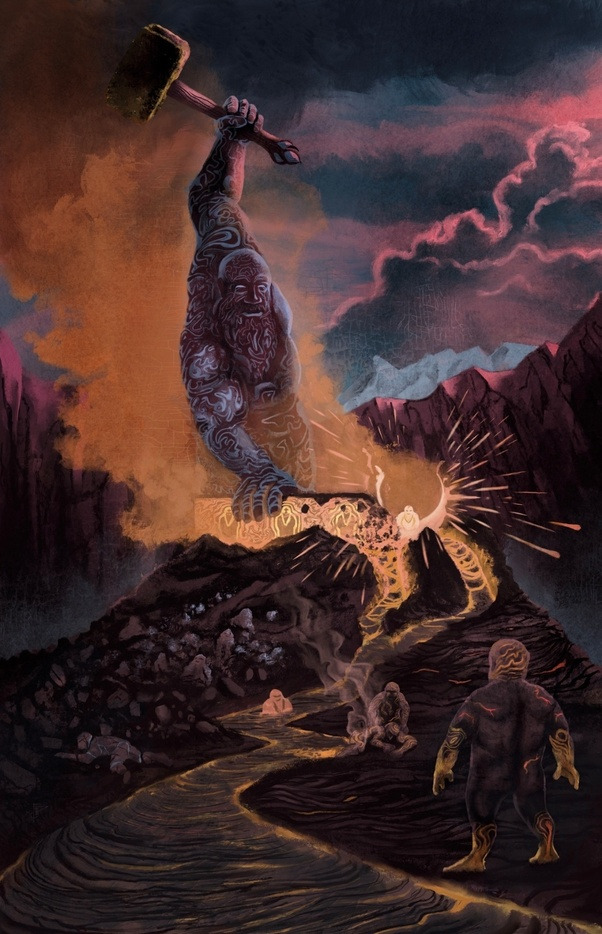
Aulë Creates the Dwarves by emyart15
The Elves assume that the Dwarves turn back into rock after they die, but the Dwarves themselves believe that Aulë (whom they call Mahal) will transport them to their own section of the Halls of Mandos after they die, and that they will eventually be given a place among the Children of Ilúvatar. They believe that they will help Aulë remake Arda after the final battle with Melkor at the end of the world, and that the Seven Fathers of the Dwarves (one of which is Durin) will return to help them in the final battle. (It’s a pretty common folkloric convention that heroic or legendary figures will return when their people have the most need of them. King Arthur, for example, is hibernating in a cave somewhere, waiting until the day when England has most need of him.)
Aulë kept his creation of the Dwarves secret from the other Valar, but eventually opened up to his wife about it. Yavanna is happy for Aulë that Ilúvatar was so lenient with him and his creations, but points out that because he didn’t tell her about the Dwarves, she has little influence over them. That’s why Dwarves don’t think twice about chopping trees and don’t seem to need agriculture. (Don’t ask me what they eat.) Aulë says in response, “Well, all the Children of Ilúvatar are going to take advantage of the earth’s resources, because Eru (Ilúvatar) gave them dominion over the earth and everything on it, so don’t blame me if they start chopping trees.” Yavanna realizes that, because of Melkor’s dark influence, there’s no guarantee that the Elves and Men will treat the Earth’s resources with respect. So, she goes to Manwë and explains that she’s worried that none of her own beautiful creations will be left untouched. It’s bad enough that Melkor had to ruin them, but now all the Elves and Men are going to get to use them with impunity? Manwë asks her what she would preserve if she had the option. She says that trees are her favorite creation, and muses that if only the trees had someone who would speak for them when they were treated badly! Manwë responds, “Well, that’s weird,” and Yavanna says, “It was in the Song so it’s definitely canon!” With some help from Ilúvatar, Manwë listens to the Song of Creation again and realizes that there was a lot of stuff in there that he missed the first time.
So, guess which race of beings the tree goddess is responsible for creating? From her thoughts, Yavanna creates (or will create, once the Elves and Men have come) the race of Ents, who will protect the forests from too much interference from the other races.
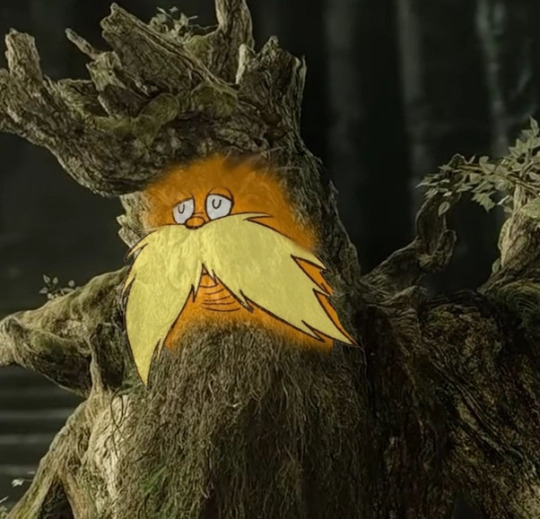
Manwë also sees a race of his own in his vision. Guess which race the sky god is responsible for? The Eagles!
Chapter 3: Of the Coming of the Elves and the Captivity of Melkor
In which the Elves finally show up.
For a long while, the Valar live blissfully in the relative paradise of Valinor, but the only light on Arda comes from the Two Trees, so the rest of Middle-earth is still dark. Yavanna’s still grieving for Melkor’s destruction of all of her original plant life, so she preserves as much as she can by putting it to sleep. Meanwhile, Melkor is off doing his thing in the north, steadily growing in power and strength. The Valar still haven’t found his stronghold of Utumno, and he expanded his operation into a second fortress called Angband, which he put Sauron in charge of.
The Valar are somewhat concerned about this, so they meet to talk about it. Tulkas is all in favor of going to war against Melkor again: “Are we just going to sit on our asses and let the Elves worship Melkor?” Mandos says that it’s fated that the Elves will see the stars before they see any other light, so there’s not much point in trying to clean up Middle-earth before then. So Varda, the star goddess, decides to make the world more welcoming for the Elves by putting new stars in the sky, which the narration describes as the “greatest of all the works of the Valar since their coming into Arda,” which… I don’t know, is creating new stars from the light of Telperion a bigger deal than creating Dwarves? Actually, I take that back — the Elves definitely would think it’s a bigger deal, because they care more about stars than about Dwarves. They give Varda the epithets Tintallë, “Kindler,” and Elentári, “Queen of Stars.” The constellations all have their own Elvish names, but there’s a few references in there that make it clear that the night sky Tolkien describes is the sky as we know it — Orion is called Menelmacar, and somehow fortells the Last Battle at the end of the world, and the Crown is called Valacirca, the Sickle, which represents doom. As soon as Varda is finished, and Menelmacar and Helluin (Orion and Sirius) rise, the Elves awaken. The Elves saw the stars before anything else, and so they revere Varda as their chief goddess.
The Elves first arose on the shore of a lake called Cuiviénen, the Water of Awakening. It was thought to be in the northeast of Middle-earth, but it no longer exists because the world has physically changed so much since then (seriously, the map depicts what is clearly the same land mass as the one in LotR, but the geography is otherwise unrecognizable). The Elves developed the first language, and called themselves the Quendi, which means (roughly) “those who speak.” The Valar were completely unaware of the Elves’ existence until Oromë happened to hear voices during one of his hunts. (Language is the beginning and end of all Tolkien’s worldbuilding, so, it doesn’t surprise me that his first people define themselves by their ability to speak, and that language is what leads the gods to them.) The Quendi are the Elves at their absolute peak — stronger, greater, and overall better than their descendants. The only thing the Elves retain as time goes on is their beauty, which becomes somewhat enriched by centuries worth of melancholy brooding. Despite having known about the Elves from the visions, Oromë is still stunned to actually see them. The name that he gives them, using their own language, is “Eldar,” the people of the stars.

At Lake Cuiviénen by Ted Nasmith
Of course, Melkor knew about the Elves before any of the Valar did, and so he got to them first. When the Elves become aware of Oromë, they are afraid of him. If the Elves ventured too far into the woods, they usually wouldn’t come back, so they blamed the disappearances on Oromë. Their oldest songs describe him as a shadowy terror who hunts down elves who stray too far from home. What actually happened to the poor Quendi who disappeared? Well, no one knows for sure, but one theory is that Melkor dragged them to Utumno and corrupted them, so that they became the ancestors of the Orcs. The Orcs are a ghastly parody of life, many times worse from Ilúvatar’s perspective than Aulë’s unsanctioned creation of Dwarves.
The Valar are ecstatic to hear that the Elves finally exist, but realize that, as usual, they need to do something to stop Melkor before he ruins everything. So, they go to war. Again. The Northwestern coast of Middle-earth is smashed to bits by the battle, and the Valar lay siege to Utumno. They eventually win, and bind Melkor with a chain so powerful that it has a name (Angianor). The Valar toss him into Mandos to rot, and while bound, Melkor stops being a problem for a while. However, there are still plenty of evil things lurking underneath Melkor’s fortresses, and the Valar still don’t know about Sauron. The Elves, meanwhile, are completely oblivious that any of this is going on, because the Valar kept them well-protected. Despite the fact that they had no part in the battle, Melkor blamed them for his initial downfall, because the whole war was fought for their sake. I’m sure that won’t cause problems later on.
The question remains of what to do with the Quendi. Middle-earth is really where they’re supposed to be, but it’s pretty banged-up after the war and still full of Melkor’s minions. Most of the Valar agree that the Elves should come to live with them in Valinor, beneath the light of the Two Trees, where they can live eternally in bliss. At first, the Elves don’t want to go to Valinor. They don’t know anything about the Valar, and everything they do know comes either through Oromë (who at this point has made friends with them) or through having caught glimpses of their scariest aspects during the war. Three Elves — Ingwë, Finwë, and Elwë — are sent as envoys to Valinor.

Ingwë, Elwë, and Finwë, by _star热爱生活呀巴扎嘿
They see the beautiful, paradisal place, and the divine city, and the two glowing trees, and are so awestruck that they tell all the other Elves that they should definitely go to Valinor. About half the Elves think this is a good idea and are eager to see the Two Trees, but the other half prefer to stay in Middle-earth under the stars, where they feel most at home. The ones who go to Valinor are called the Eldar, “people of the stars,” because that’s what the Valar originally called them. The ones who remain are the Avari, “the unwilling.” Unfortunately, Elf Brexit (Elfxit?) has near-permanent consequences, and the two groups of Elves don’t see each other again for thousands of years.
So, the elves are now divided into multiple ethnicities based entirely on whether they saw the Two Trees of Valinor, and how long it took them to do so. Those who went to Valinor and saw the Trees are the Calaquendi, the Light Elves. Those who did not go to Valinor, either because they voted to remain or because they got lost along the way, are the Moriquendi — the Dark Elves — because they never saw the Light.
The Eldar are further divided into three groups depending on which of the three envoys they follow. The ones who follow Ingwë arrive in Valinor first, and become the Vanyar, the Fair Elves, who are the personal favorites of Manwë and Varda. Ingwë himself became the greatest and most revered of Elven kings, but he never returned to Middle-earth. The Elves who follow Finwë become the Noldor, the Deep Elves, who are Aulë’s favorites. The third group follow Elwë Singollo (“Greymantle”), and they take the longest to make it to Valinor. They become the Teleri, the Sea Elves, and live alongside the water. (There are even more subdivisions of Elves than this, but I’m stopping there.)
Astride his white horse, Oromë leads the Eldar westward, and the map is getting more confusing as I try to follow their progress. The text mentions that the Elves have to cross the Misty Mountains, which were even taller and scarier in those days because Melkor had just raised them specifically to stop them from crossing. (Hey, did you know that the Misty Mountains have an actual name? They’re called the Hithaeglir.) But the Misty Mountains and the Anduin, both familiar landmarks, aren’t on the map. You know what is on the map? Minas Tirith. That implies that most of the map is where Gondor and Mordor are now, and… you know what, that’s just kind of messing with my head.
Okay, so, I did some map research. Although the coastline of the Silmarillion map looks very similar, not only is it not the same, it’s actually much further west than Middle-earth as we know it. The entire land mass is gone by the time LotR takes place. The easternmost thing on the Silmarillion map is the Blue Mountains, which are the westernmost thing on the LotR map. On the other side of them is what will be the Shire. The Misty Mountains and Anduin aren’t on the map because they’re even further east. That means that there are two Minas Tiriths; I’m really interested in hearing that story. You know what, all of my confusion could have been cured if this long-lost northwestern portion of Middle-earth didn’t have the same damn coastline.
This map attempts to show both side-by-side (though it can’t really be called accurate because there are plenty of other changes to the continent between the First and Third Ages). The entire Silmarillion map is that leftmost piece, on the west side of the first vertical mountain range:
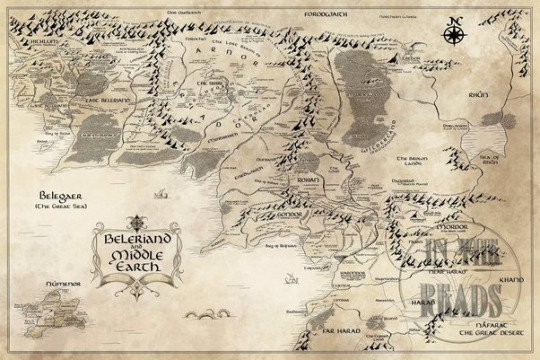
One of the lands on the Silmarillion map is called “Thargelion,” which also happens to be the name of an Athenian month. Cool.
#the silmarillion#silmarillion#tolkien#jrr tolkien#the lord of the rings#lotr#elves#tolkien elves#ingwe#elwe#finwe#valinor#aule#yavanna#dwarves#tolkien dwarves#ents#middle earth#the silm#silm fanart#silm elves#noldor
44 notes
·
View notes
Text
Finwë: (accidentally hits Elwë with a fruit)
Ingwe: (three hours later) You can come down the tree now, he gone
Finwe: He’s not gone… he’s waiting…
60 notes
·
View notes